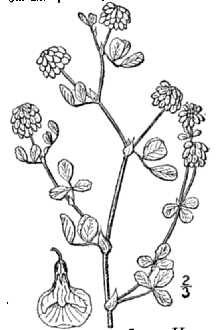Hop Trefoil
| Hop Trefoil {{{status}}} Fossil range: {{{fossil_range}}}
| ||||||||||||||||||||||||||||||||||||||||||||||||||||||||||||||||||
|---|---|---|---|---|---|---|---|---|---|---|---|---|---|---|---|---|---|---|---|---|---|---|---|---|---|---|---|---|---|---|---|---|---|---|---|---|---|---|---|---|---|---|---|---|---|---|---|---|---|---|---|---|---|---|---|---|---|---|---|---|---|---|---|---|---|---|
 | ||||||||||||||||||||||||||||||||||||||||||||||||||||||||||||||||||
| Plant Info | ||||||||||||||||||||||||||||||||||||||||||||||||||||||||||||||||||
| ||||||||||||||||||||||||||||||||||||||||||||||||||||||||||||||||||
| Scientific classification | ||||||||||||||||||||||||||||||||||||||||||||||||||||||||||||||||||
| ||||||||||||||||||||||||||||||||||||||||||||||||||||||||||||||||||
| [[{{{diversity_link}}}|Diversity]] | ||||||||||||||||||||||||||||||||||||||||||||||||||||||||||||||||||
| {{{diversity}}} | ||||||||||||||||||||||||||||||||||||||||||||||||||||||||||||||||||
| Binomial name | ||||||||||||||||||||||||||||||||||||||||||||||||||||||||||||||||||
| Trifolium campestre Schreb. | ||||||||||||||||||||||||||||||||||||||||||||||||||||||||||||||||||
| Trinomial name | ||||||||||||||||||||||||||||||||||||||||||||||||||||||||||||||||||
| {{{trinomial}}} | ||||||||||||||||||||||||||||||||||||||||||||||||||||||||||||||||||
| Type Species | ||||||||||||||||||||||||||||||||||||||||||||||||||||||||||||||||||
| {{{type_species}}} | ||||||||||||||||||||||||||||||||||||||||||||||||||||||||||||||||||
| {{{subdivision_ranks}}} | ||||||||||||||||||||||||||||||||||||||||||||||||||||||||||||||||||
| [[Image:{{{range_map}}}|{{{range_map_width}}}|]] | ||||||||||||||||||||||||||||||||||||||||||||||||||||||||||||||||||
| Synonyms | ||||||||||||||||||||||||||||||||||||||||||||||||||||||||||||||||||
| {{{synonyms}}} |
Trifolium campestre, commonly known as Hop Trefoil and Low Hop Clover, is a species of clover native to Europe and western Asia, growing in most areas, but specifically thriving on dry, sandy grassland habitats, as well as in fields, woodland margins, roadsides, wastelands and cultivated land. The species name campestre means "of the fields".
It is a herbaceous biennial or annual plant, growing to 10-30 cm tall, with distinctive yellow flowerheads that superficially resemble Hop flowers. Each flowerhead is a cylindrical or spherical collection of 20-40 individual flowers. The flowers become brown upon aging and drying. The leaves are alternate and trifoliate, with three oblong or elliptical leaflets 4-10 mm long.
This species is very closely related to Large Hop Trefoil (Trifolium aureum).
Cultivation and uses
Hop trefoil is the third most important clover in agriculture because its foliage is good for feeding livestock and replenishing soil. It is not generally planted, but is considered a valuable herb when found growing in a pasture. It has become naturalised in North America, particularly in the west and south of the continent.
References
- Trifolium campestre
- FABACEAE - Pea Family
- Purdue New Crops: Hop clovers
- Ajilvsgi, Geyata. (2003). Wildflowers of Texas. Shearer Publishing, Fredericksburg, Texas. ISBN 0-940672-73-1.